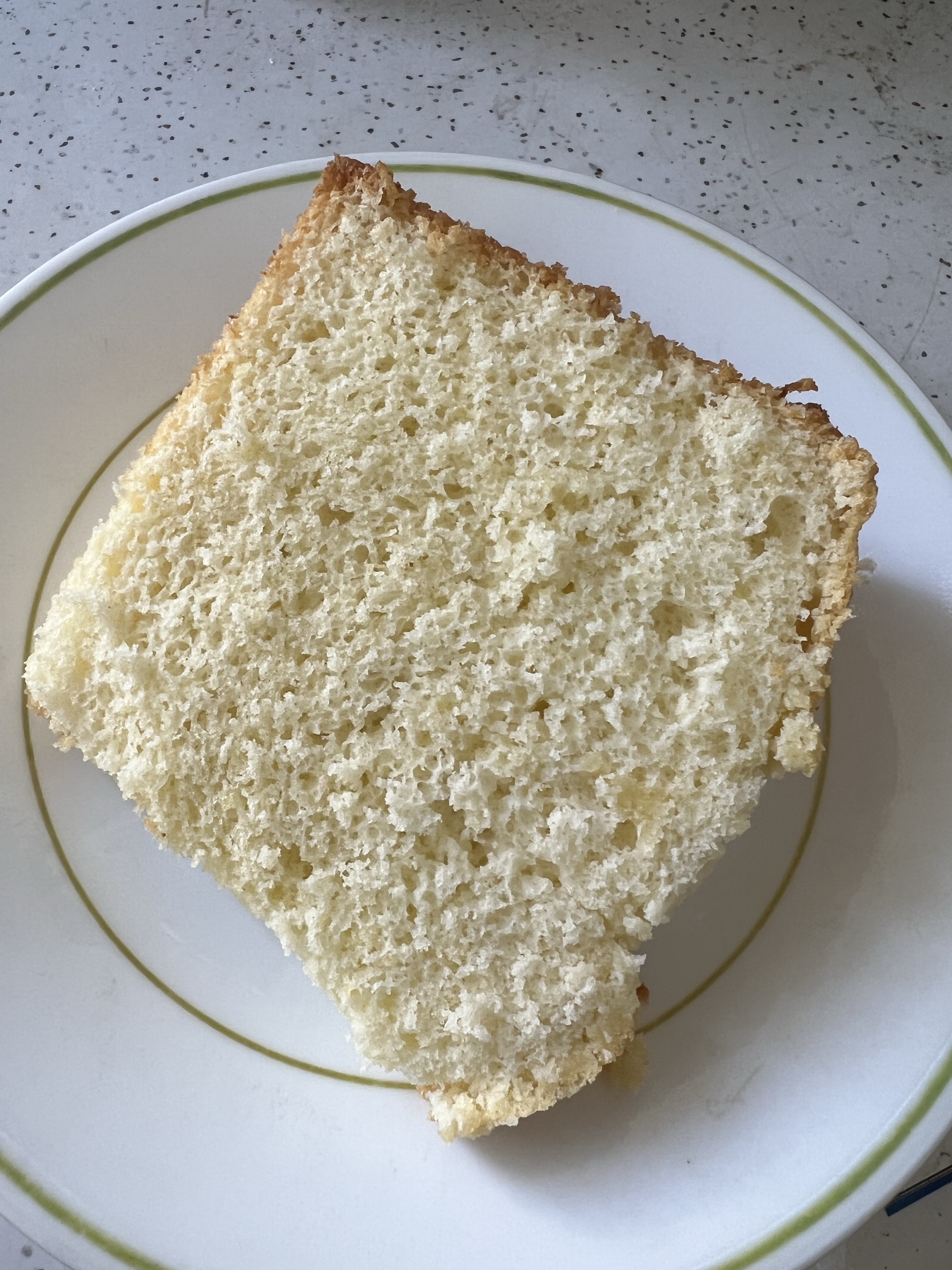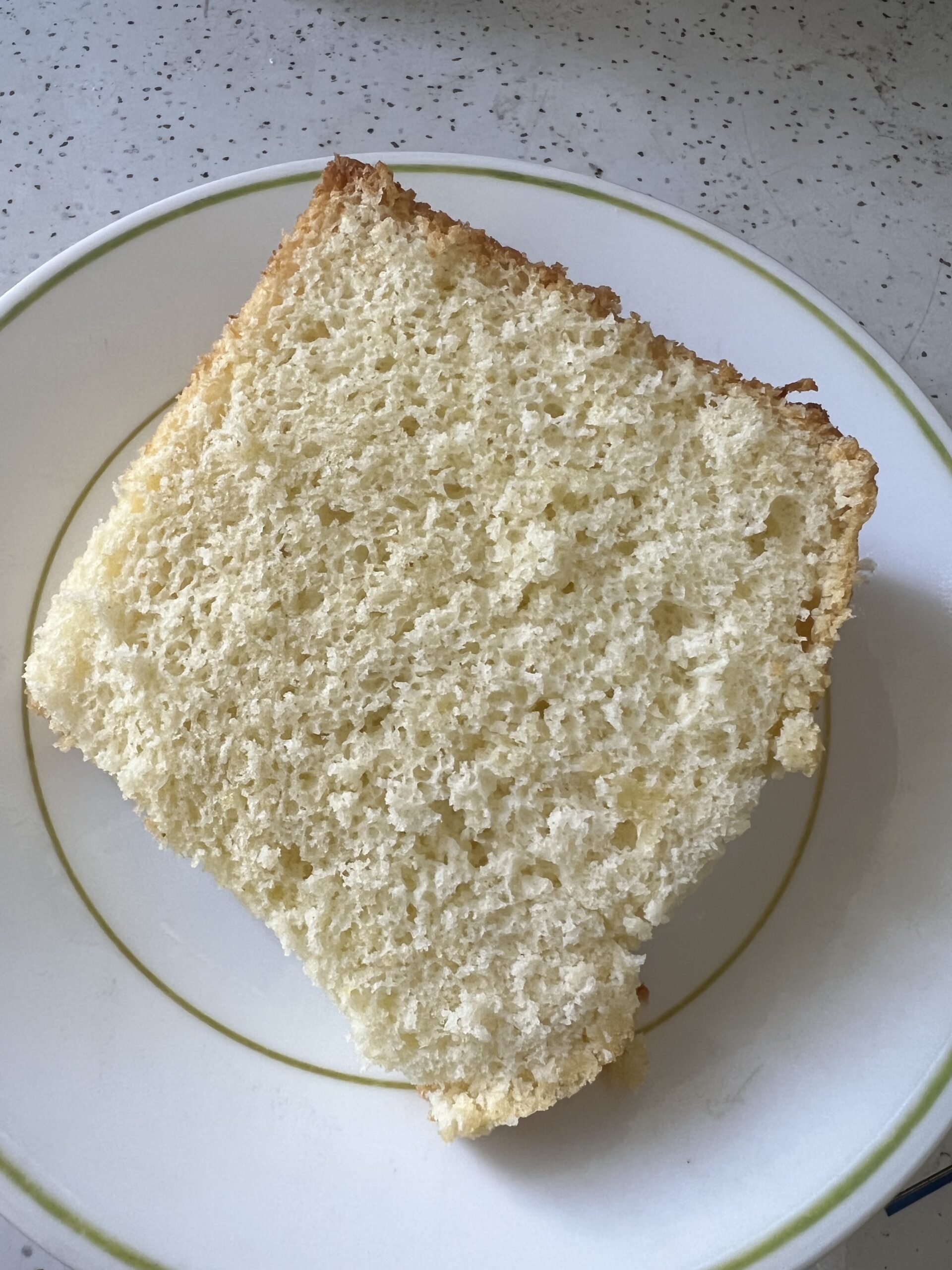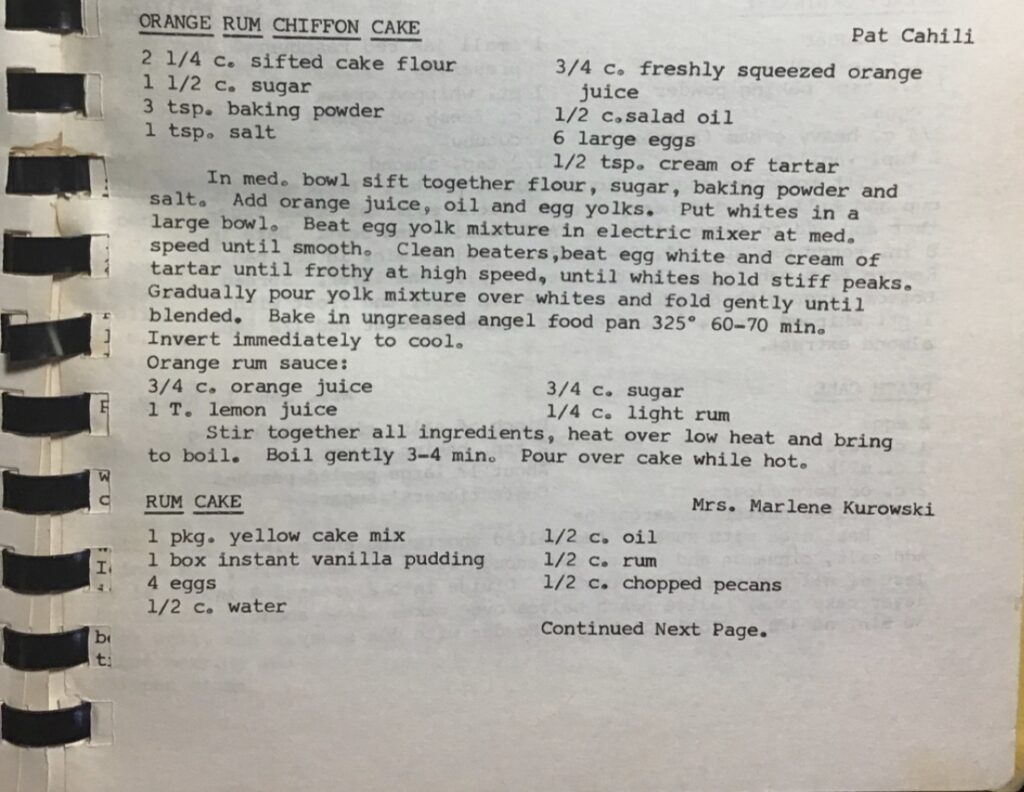
The appeal of chiffon cakes is their light and fluffy texture. It was created by the aptly named Harry Baker in the 1920s to be an even lighter and more delicate cake than the already popular Angel Food Cake. Interestingly, he achieved this by using whole eggs (divided) instead of just egg whites and using oil instead of butter or leaving it out altogether as you would for an Angel Food Cake.
Obtaining this perfect ethereal texture isn’t difficult but you do need to follow the instructions carefully and use the correct tools. This is not a recipe where you can make a lot of ingredient substitutions—except for the juice, any citrus would work—or swap in a different pan or simplify the mixing.
Following the recipe results in a lightly sweet tart cloud of a cake so all the fussiness is worth it, I promise!
I used this footed angel food cake pan to great results.

Lemon Chiffon Cake
Ingredients
- 6 eggs, divided use
- ½ teaspoon cream of tartar
- 2 ½ cups cake flour
- 1 ½ cups sugar
- 3 teaspoons baking powder
- Pinch salt
- ¾ cup freshly squeezed lemon juice from about 3 large lemons
- Zest from one lemon
- ½ cup canola oil
Instructions
- Preheat oven to 325°. Place a footed tube pan (this is not optional, this is not a bundt pan despite looking similar to one, it will have a center piece with the “tube” that will not be attached to the sides and small metal “feet” attached to the sides that rise above the tube) on the counter where it will be handy. DO NOT GREASE OR FLOUR THE PAN.
- In a glass or metal bowl or in the glass or metal bowl of a stand mixer, beat the egg whites and cream of tartar until stiff peaks form using a whisk or the whisk attachment of a mixer.
- Meanwhile, in a second large bowl, beat together all of the remaining ingredients (including the egg yolks!) until smooth. You can do this by hand using a whisk or with a stand or hand mixer.
- Fold in the egg whites to the egg yolk batter using a metal spoon.
- Immediately scrape into the ungreased tube pan and bake for 60 minutes or until it’s slightly gold and a tooth pick or thin knife inserted into the center of the cake comes out clean.
- Immediately flip the pan and allow it to rest on its “feet”. I like to do this over a platter or a sheet of parchment paper on the counter. It is rare but occasionally gravity will pull the cake out of the pan when it is cool and you don’t want to lose the cake!
- Cool the cake completely upside down. You will know it is cool because the tube inside will feel cold to the touch. This takes at least an hour so plan accordingly.
- Run a thin knife around the outer edge of the pan and around the tube, if needed, and gently press the bottom of the pan to release the cake.
- Use a serrated knife to cut into slices and serve.
- This cake is best the day it is made but you can keep leftovers at room temperature for 1-2 days in an airtight container

A version of this post appeared in Aspics, Chicken Salad, and Ice Cold Celery: Finding Community through Maryland Recipes